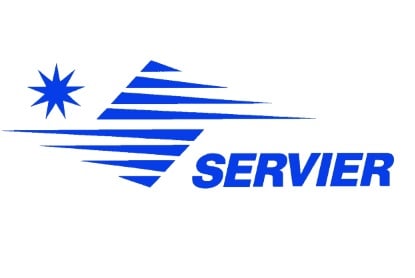Shedding light on the unique business model of French pharma’s most successful mid-cap.
Not long ago, Laboratories Servier was considered a somewhat mysterious and opaque actor on the world pharmaceuticals stage. Privately owned, smaller and sleeker than many of its direct competitors, but nonetheless formidably successful, Servier has, for many years, been characterized by its discreet, understated approach and a rugged pragmatism and diligence in ‘just getting on with the job’ well away from the glare of the limelight. These days, under the forward-looking stewardship of Olivier Laureau, the company has, been steadily opening up to the public eye and this year’s annual corporate conference is a case in point. The event afforded a rare opportunity for onlookers to ‘peer under the bonnet’ and discover the inner workings of what remains a very distinctive business model.
A group of our size – with 21,200 employees, and 4 billion dollar capitalization – has absolutely no choice in the present world of medicine, but to focus its research on a limited number of key biological pathologies and processes
Emmanuel Canet, Executive Vice President of R&D
Like many mid-cap players, Servier is wary of spreading itself too thinly and will strive to scope in upon a handful of high-return biologics where the company feels confident it can build genuine expertise and leadership. “A group of our size – with 21,200 employees, and 4 billion dollar capitalization – has absolutely no choice in the present world of medicine, but to focus its research on a limited number of key biological pathologies and processes,” acknowledges Emmanuel Canet, Executive Vice President of R&D. The group will thus be channeling its energies towards the development of oncology products while simultaneously continuing to advance its historic capabilities in specialties such diabetes, cardiovascular, immune-inflammatory and neurodegenerative disease. “Oncology will be absorbing some fifty per cent of our R&D budget by 2018 which represents a big increase from the 14 per cent allocation of two years ago,” he reveals. “Of our 23 molecules currently under development, 9 already relate to combatting cancer.”
Each year the company re-invests some 700 million euros, roughly a quarter of its prescription drug sales, straight back into R&D courtesy of its iconic private-ownership structure managed through a non-profit foundation. “The beauty of the Servier way is that we don’t have to chase short term goals to satisfy shareholders, we can set and maintain an enduring strategy over the long run and with no dividend to pay, revenues are all reinvested and self-financing,” notes Canet. “The foundation provides us with the necessary stability to grow without needing to resort to bank loans or external support.”
Unable to compete in terms of financial firepower with its Big Pharma competitors, Servier has meanwhile been vigorously pursuing partnerships to the point where today two thirds of the company’s product pipeline is developed in collaboration with household pharma giants (such as Novartis, Amgen and Pfizer), smaller biotechs (such as Cellectis, Taiho, Geneuro and Intarcia) and host of other research entities. “Given the rapid complexity and evolution of therapies in oncology and neurodegenerative disease, it is no longer possible to master all the latest knowledge and technologies on your own… no one can aspire to possess a complete monopoly over the development process,” reflects Canet. “We have signed some forty partnerships in the last five years, because, these days, in order to meet the need for specialization, innovation and rapid introduction of new drugs, no laboratory can realistically hope to go it alone.”
In September, Servier announced a strengthening of a partnership with Amgen for development of heart failure products and the extension of a collaboration with Novartis on oncology. The company has also been making much headway with the roll out of Lonsurf, a therapy for colon cancer, co-developed in conjunction with Japanese biotech, Taiho. “These partnerships represent a means of enhancing the tempo and pace of Servier’s research,” attests Eric Falcand, Vice President for Business Development and Licensing. “We simply do not have time to develop all of our discoveries internally, so by allying ourselves with other high performance actors, we can ensure that potential new molecules do not end up just sitting on the shelf awaiting proper development… our overriding objective is to make the best use of each partner’s skills and take advantage of its strengths to make new medicines available to doctors and patients. ”
It is perhaps the manner of these partnerships that it is most eye-catching of all. To date, Servier has refrained from opening affiliates in the mega markets of the United States and Japan, preferring instead to hand over control of those commercial rights to their partners while concentrating steadfastly on Europe and emerging markets. Amgen for example, holds the marketing authorization rights in its home American market for the Servier product Ivabradine. Taiho, meanwhile, possesses the rights for Lonsurf in its home market of Japan as well as the United States. “Our asset is actually not to be present directly in the US and Japan, despite them being two of the best pharma markets of the world,” muses Falcand. For him, it is precisely this arrangement that enables Servier to clinch the big-name partnerships that allows the company to remain at the bleeding edge of scientific advancement in countering diseases with massive unmet need. “Partnerships can involve taking licensed molecules or, on the contrary, entrusting Servier molecules to other groups, the two actions being able to be carried out with the same partner,” he reasons.



